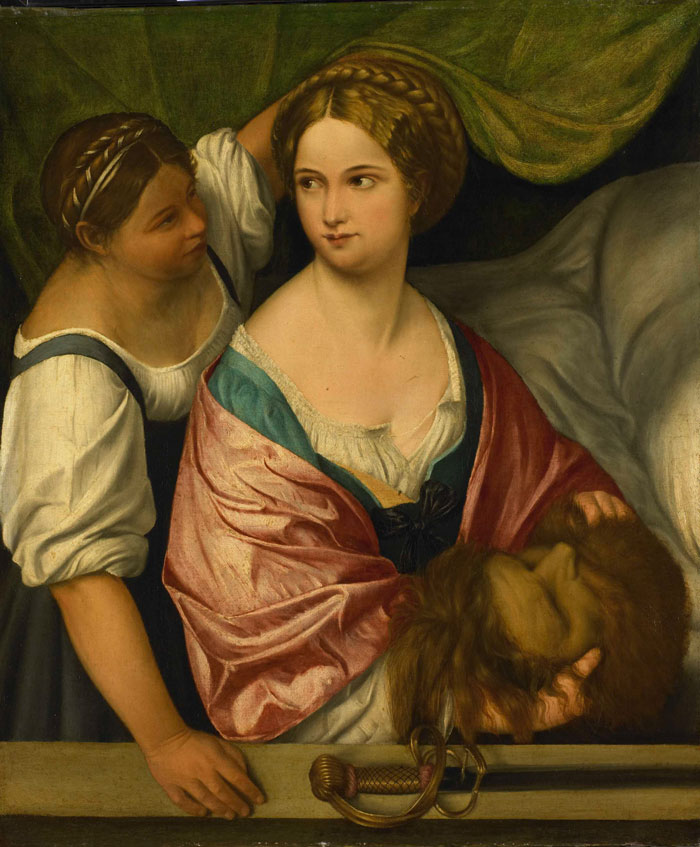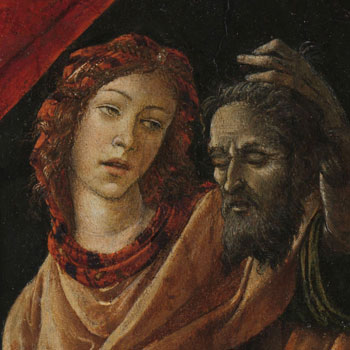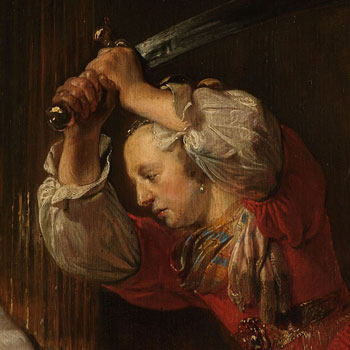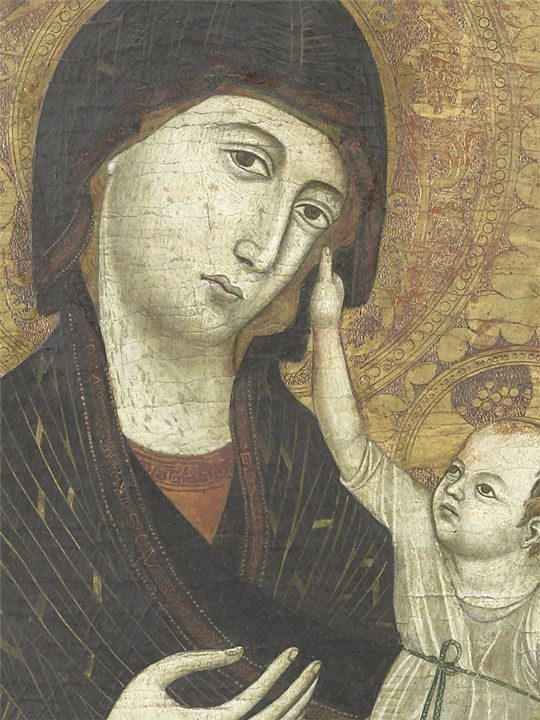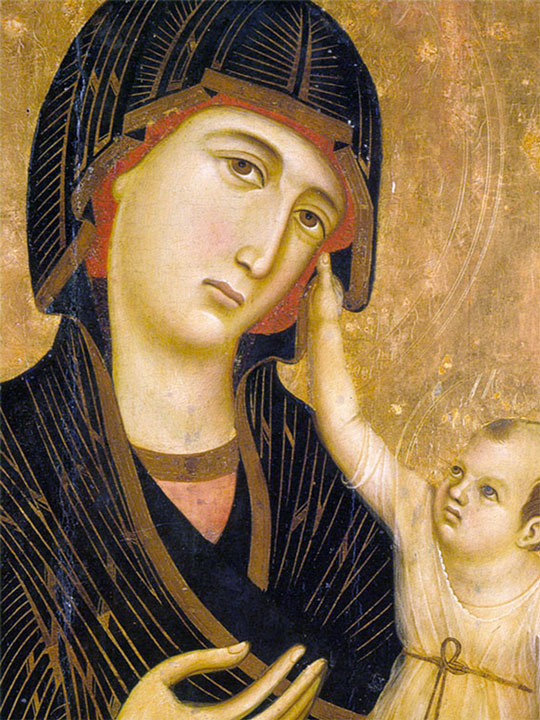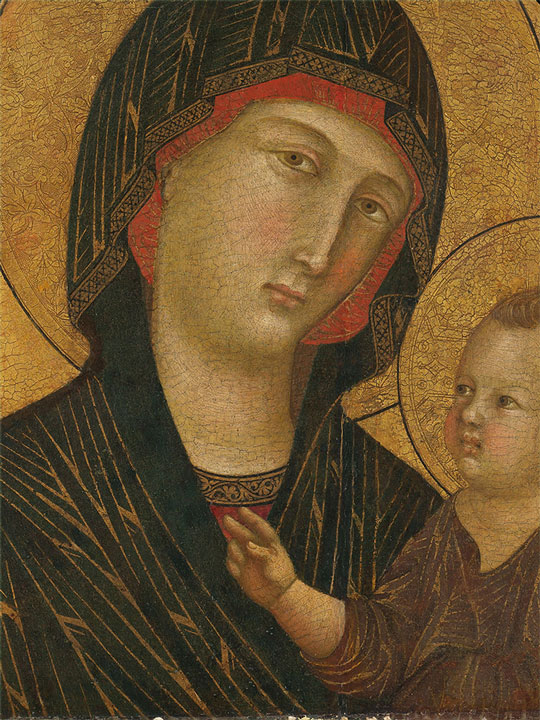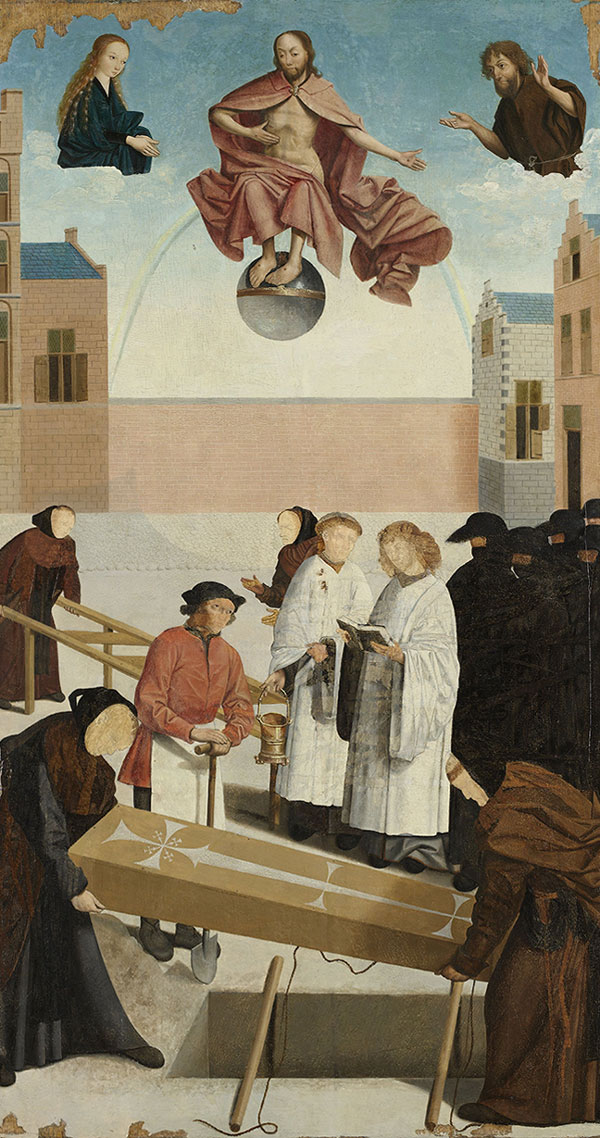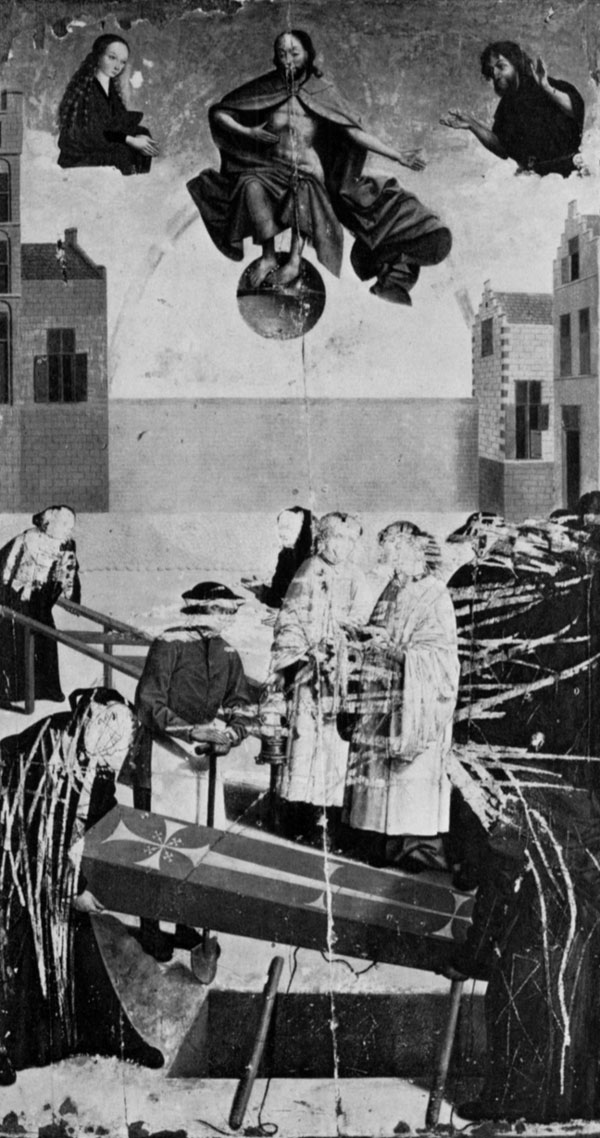Judith with the Head of Holofernes
The biblical city of Bethulia is under attack.
General Holofernes is about to deliver his final blow. Only then Judith, a rich widow, decides to protect her city once and for all from damnation.
After nightfall, Judith and her maid go to the enemy camp and with the help of their bewildering beauty manage to easily reach the tent of the General. Holofernes is deceived by believing Judith has romantic intentions. Instead she gets him drunk and cuts off his head. As soon as the soldiers find out their leader is dead, they flee in blind panic.
Around 1500, the Italian painter Pordenone depicted Judith holding the head in the company of her maid and the murder weapon. This is one of the first examples of a painting on canvas rather than on wooden panel in the Rijksmuseum collection.
Canvas took over from panel in Italy by the first half of the 16th century. In the Netherlands a similar transition took place, but only about a century later.
